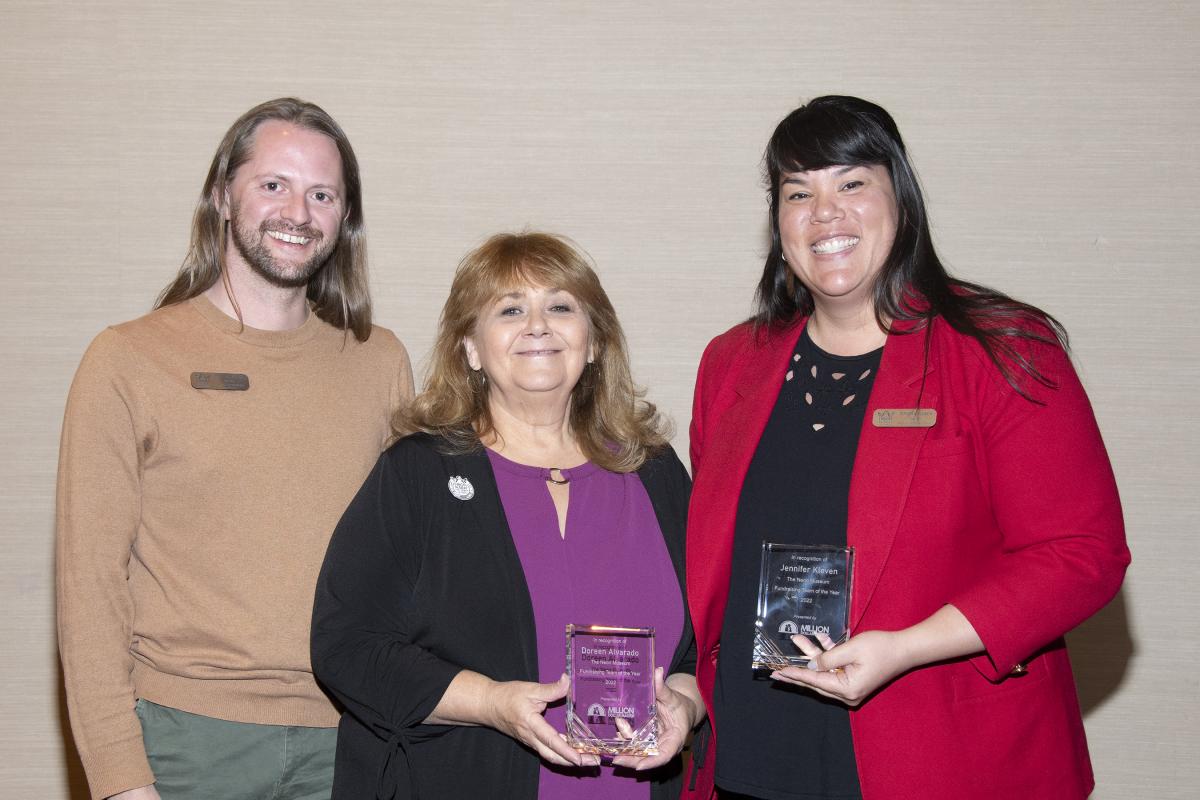
Written by JM Huck and the Development Department at #TeamNeon, The Neon Museum, Las Vegas Nevada
In April 2023, The Neon Museum's fundraising team was presented the Team Fundraising Award at the Third Annual Million Dollar Master Awards in Las Vegas, Nevada.
According to staff member and Senior Database Manager, Samantha Wilson, who nominated the department for the award, “I feel that this small team accomplished a large goal while managing multiple bumps in the road.” The first shift involved an organizational restructuring, where the development team of three was split into a team of two, plus the formation of a new database department of one. For nearly a year, until the fall of 2022, fundraising fell on the shoulders of long-time Neon Museum staffer and Advancement Director Jennifer Kleven and museum-careerist and Membership Manager Doreen Alvarado. Neon Museum Executive Director Aaron Berger also assisted the department during this transition, and the team focused on funding programs to benefit the community.
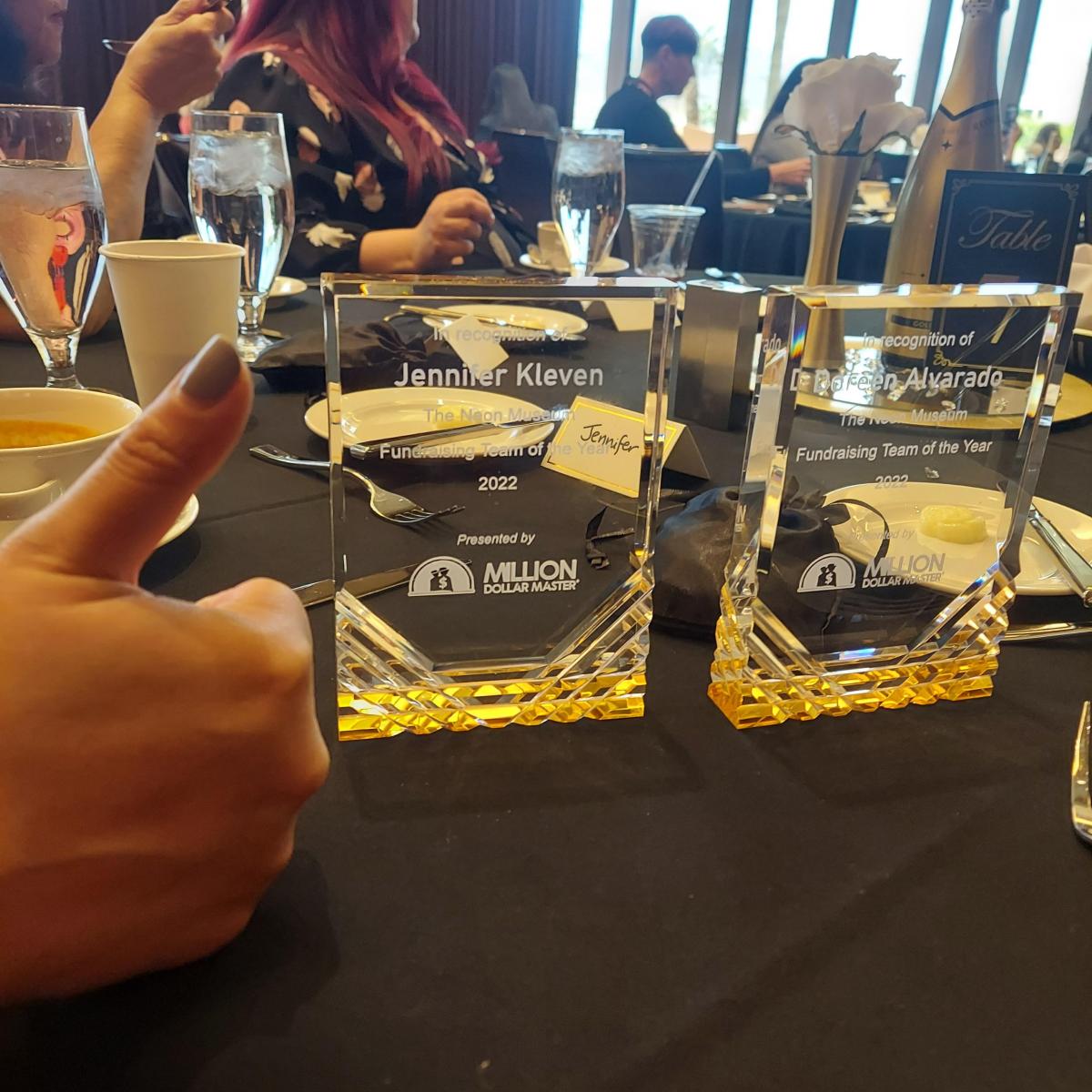
Key events in 2022 included the museum’s ten-year anniversary, as well as the launch of its first multi-day festival, Duck Duck Shed: Celebrating Las Vegas Architecture, Design and Culture. The inaugural Duck Duck Shed (DDS) events attracted more than 3,400 participants including 50% from outside of Southern Nevada. Preparations are diligently underway for DDS 2023.
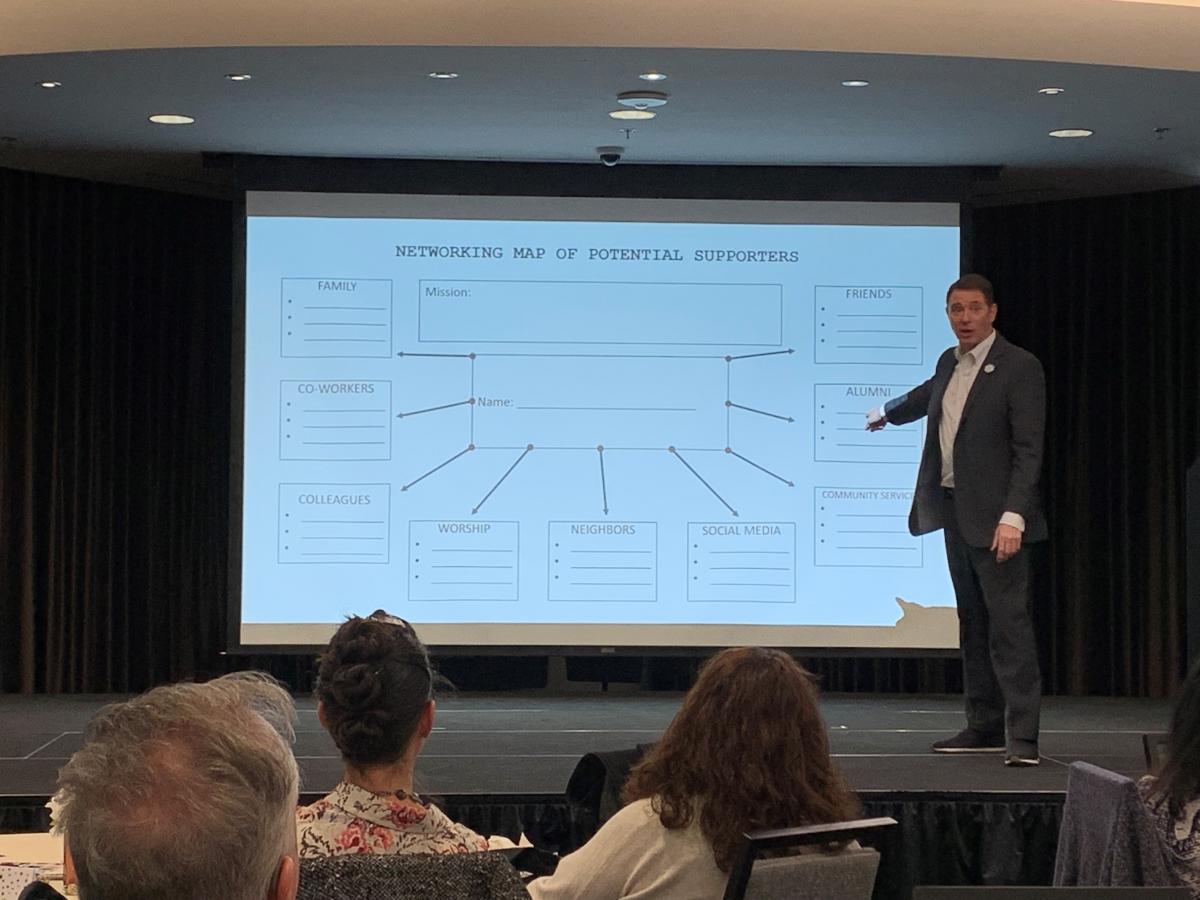
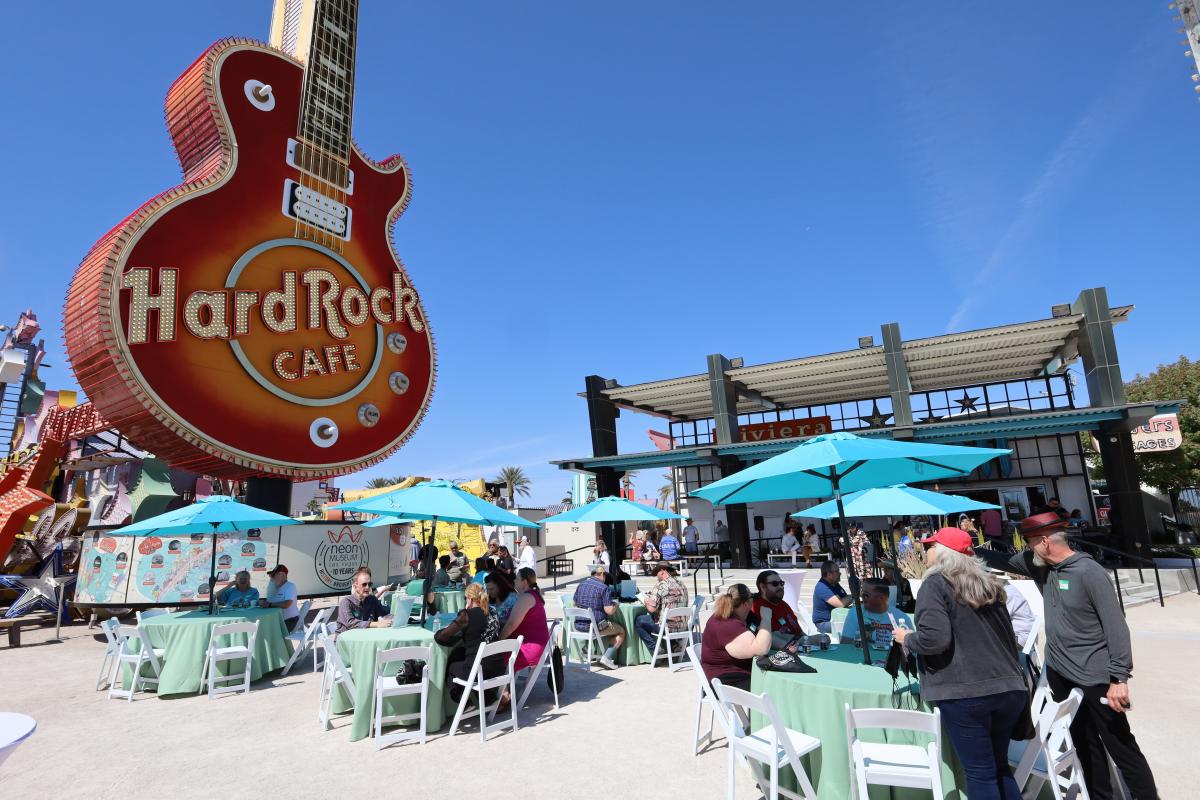
Combined, Aaron, Jennifer and Doreen have a lifetime of museum experience. These are seven of the guiding principles they’ve carried over the years.
- Fundraising should be driven by need or excellence.
Need: The Neon Museum’s collection, for instance, includes over 800 individual pieces from about 200 properties, and over 250 artifacts are signs displayed in outdoor galleries. Periodically, those signs need conservation treatment or restoration work.
Excellence: In 2017, The Neon Museum was among the 25 museums recognized by the American Alliance for Museums (AAM) for accreditation. - A board should consist of four main volunteer types—marketer, cultivator, bridge builder, closer. A marketer is a cheerleader and promoter of your organization. A cultivator is a gracious host, they may open their home or Rolodex to help facilitate new connections. A bridge builder knows the “movers and shakers,” and can help put your organization in front of influential people. Finally, a closer is the board member you want to pitch your organization and actually make a case for funding with your key staff.
- Additional supporters can come from any facet of a donor’s life. Your organization’s board or current donors know many people who could be future supporters of your museum. It’s helpful to view their networks and social connections as prospective donors as well. Ask board members to list out family members, coworkers/colleagues, friends, alumni, neighbors, social media acquaintances and others that may be interested in supporting your organization. Often, it starts with a museum visit but can be as simple as a conversation.
- Every person who visits your institution is a potential member or donor. So often our visitors’ first interaction lies with a visitor or customer service agent, a museum attendant or security guard. All employees of your museum should see themselves as fundraisers and their ability to connect graciously with diverse audiences provides the foundation of the museum experience. Visitors who leave feeling a deep sense of community in your institution are more likely to become members, give additional gifts at year’s end and possibly become major donors.
- Acquiring significant gifts is an incremental process. Getting to a “yes” on a large gift happens after developing a positive relationship. Maintain donors’ trust by showing the impact of their contributions and carefully ask them to consider greater giving over time.
- You can never say thank you enough. Members and donors of the museum are targets for giving but throughout the year, you should make it a priority to just say thank you. Consider using volunteers to call special donors to just say “Thank You!” or handwrite special postcards of gratitude. These small touchpoints go a long way in building relationships and trust with your donor base.
- Be intentional with members. Think long-term (loyalty), not just short term (acquisition). The key to a thriving membership program—with healthy renewals and growth—is diverse programming. Creating a robust calendar of events will not only get members engaged but keep them coming back, year after year.
The Neon Museum fundraising team has now grown to include teacher-turned-museum-worker JM Huck, and docent-turned-grant writer Brett Salsbury. While still fairly new to the development world, they feel lucky to be working with some of the best and look forward to learning from the challenges in the journey ahead.
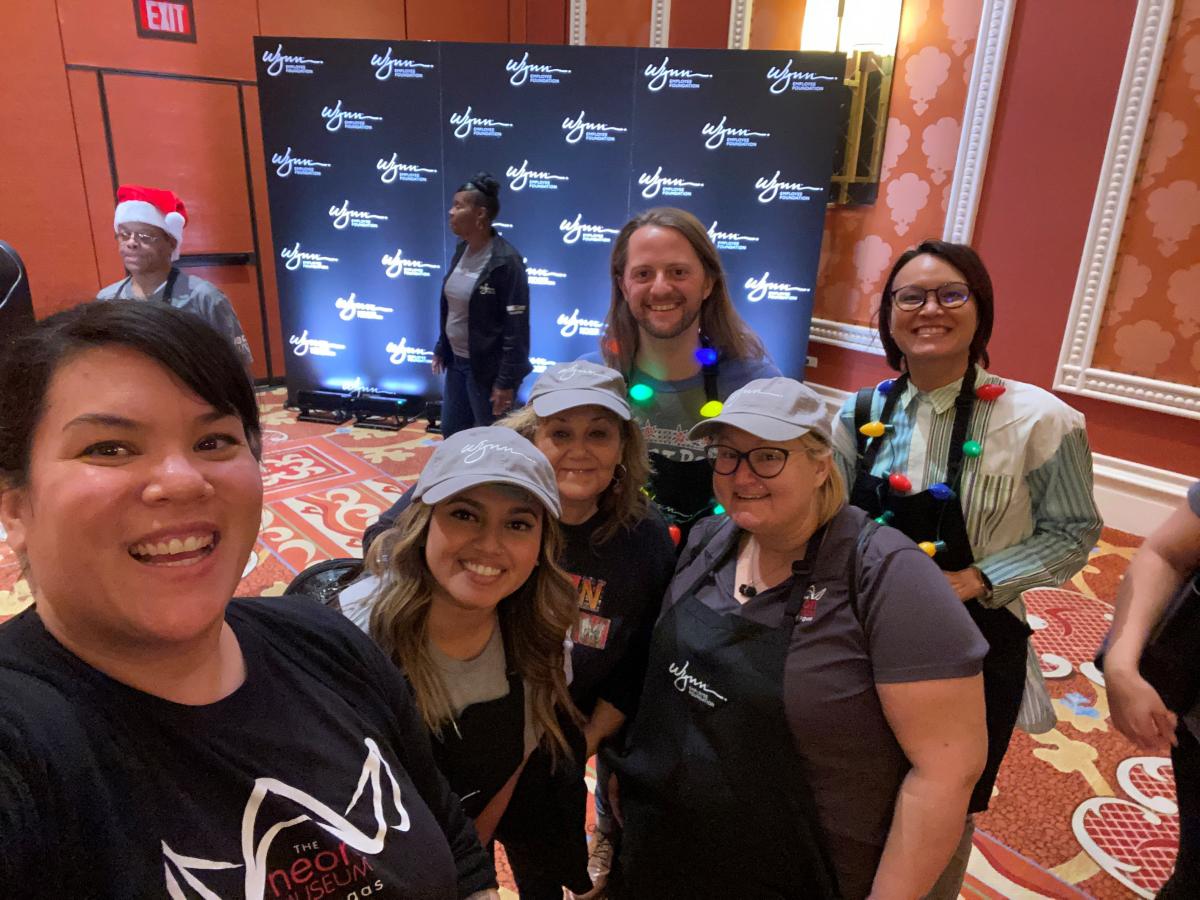
Add new comment